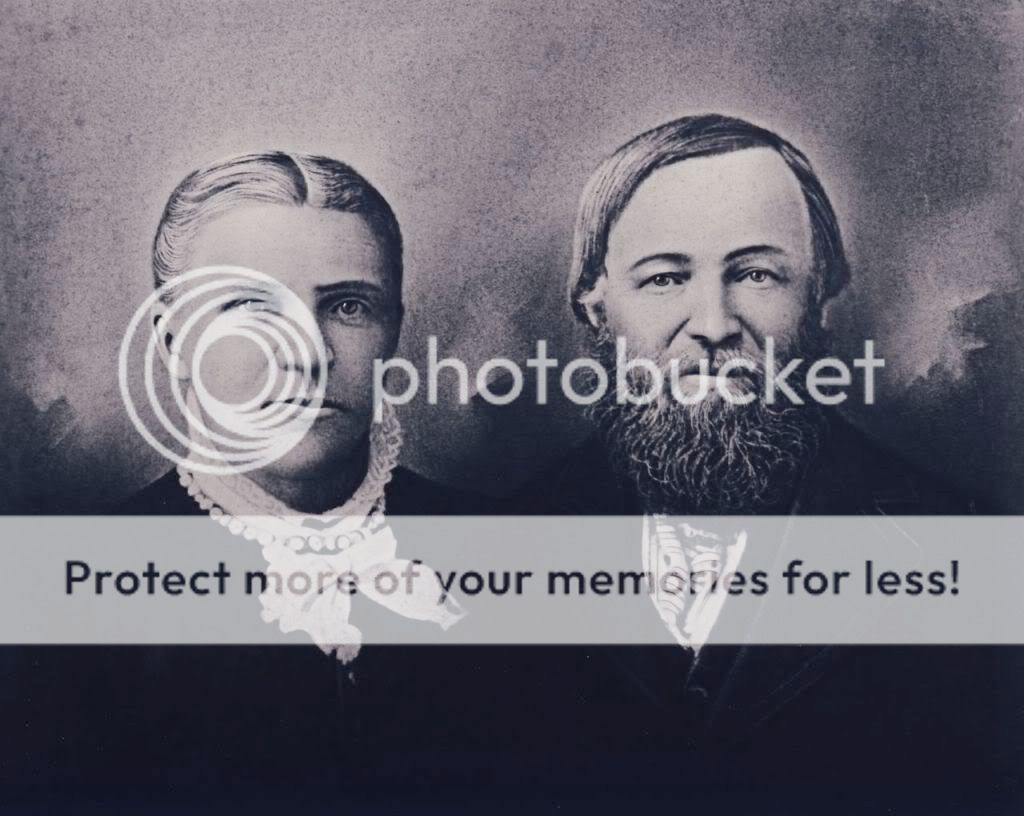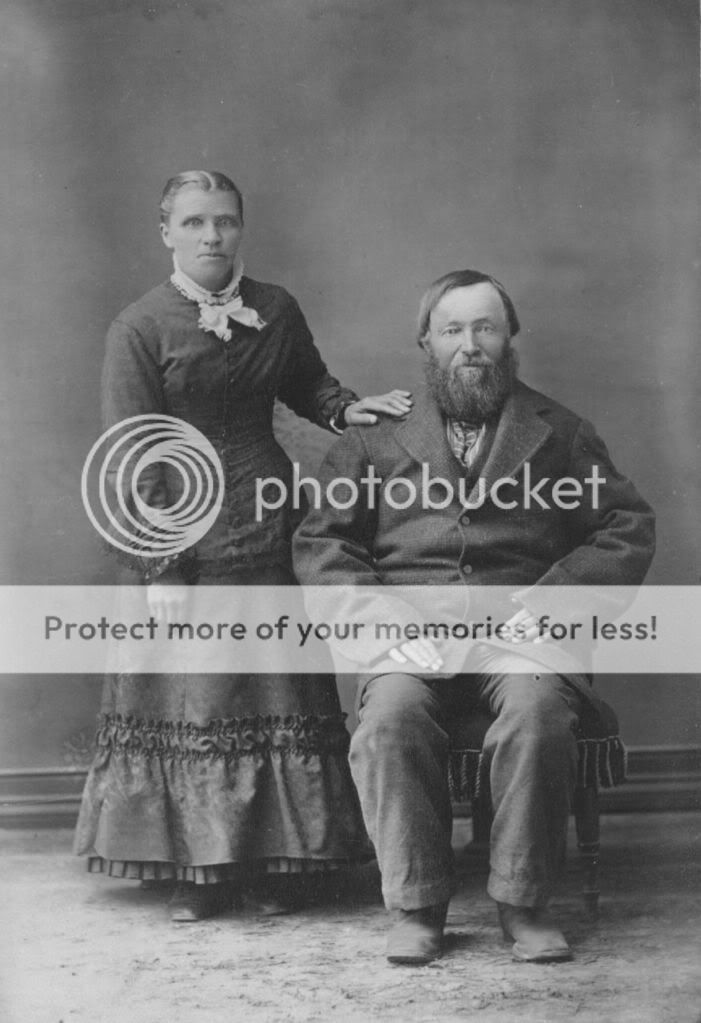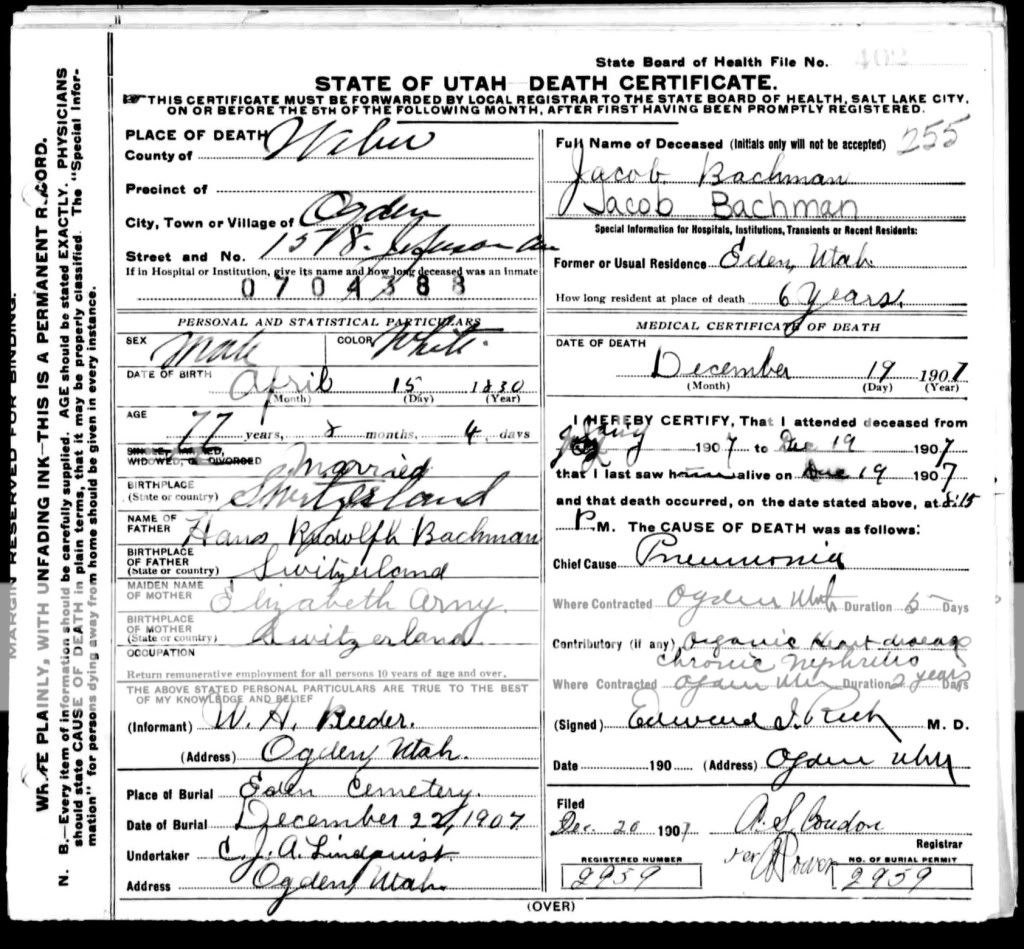Bachmann = the man living near a creek, little river (which is perfectly true for Jacob and his family.
In German we differ between officials from towns (Stadtrat) and officials from villages (Gemeinderat). Wiliberg is a village. I’m not sure whether you are using the word mayor for all type of communities (village, town, city). Anyway we only serve Wiliberg.
A1: Attached you find a map of Wiliberg. The red circle marks the area where Angelika, Rene and I live. The blue circle marks the restaurant we met and the blue line is the walk we did to the Stettler house.
A2: For an American, besides the mountain area, I think Switzerland looks like one huge urban area. You hardly find a spot not seeing a house within distance. Wiliberg is a little different. And that’s what I like the most. Still in a 10 minute drive you are on the highway and it takes you less than an hour to reach major cities like Zurich, Berne, Luzern, Basel.
A3: The shop next to the restaurant is a locksmith. I explained it wrong. Of course you can order a banister for your house. But I think in a building supply store you get almost everything to fix or build a house.
The third business is active in marketing: Willkommen bei wolf-media.ch - new media marketing & events
We have one full-time farmer and plus minus 7 part-time farmers
A4: In official writing the restaurant is spelled Moosersäge.
Moos = moss
Säge = saw (on the other side of the creek is a sawmill)
I remember when I tried to explain Moos, Jack helped me using moor. Now I know the right term is moss. For areas in the base of a valley where a creek or river runs through we use the term Moos a lot because during heavy rain the land can get flooded and stays wet for a long time.
Hopefully you understood my explanations. Otherwise don’t hesitate to ask me to clarify it.
Regards
Patric
Wiliberg has an area, as of 2009, of 0.5 sq mi. Of this area, 0.3 sq mi or 72.6% is used for agricultural purposes, while 0.1 sq mi or 17.9% is forested. Of the rest of the land, 35 acres or 12.0% is settled (buildings or roads).
Steve
Steve
 |
| This is the house next door to the Bachman home. The Bachman home is on the left. Taken in the 1970s by Steve |
 |
| Garden in front of the Bachman home. |
Familienbuch Bottenwil 1860: page 441
Translation by
https://community.familysearch.org/en/profile/WSeelentagJakob Bachmann, son of Hans Rudolf, living on the Wiliberg, see previous page 216
Born 1830 April 26
Died (added with pencil later) Ogden U (USA or UT?) 1907 Dez 19
Married 3. 10br (December) 1852 with
Elisabeth Suter von Bözberg, died Eden U (USA or UT?) 1866 Nov (day illegible)
Children:
1854 Hornung 21: Maria, baptised in Reitnau on 26 Hornung (= February)
1857 Hornung 23: Vrena (Verena), baptised in Reitnau on 15 March
1858 Oktober 27: Jakob, baptised in Reitnau on 21 November
1860 March 14: Elisabeth, baptised in Reitnau 15 April
Note added with pencil: Nach Amerika in d (= den or die?) Morm….(?) - the family emigrated to America, and I assume the "Morm…" has to do with Mormons, but cannot decipher the entire word.
According to your data on https://www.familysearch.org/tree/pedigree/portrait/KWJN-CH6 Jakob is the brother of Elisabeth (1824-1874): we had discussed her "Taufzettel" on https://community.familysearch.org/de/discussion/136266/1857-document-also-has-the-date-of-1824. If you don't mind, I would like to show this nice document to the members of https://www.geneal-forum.com/, together with a short note on the context, and this transliteration above. Would that be ok?
Born in Utah:
Sarah born in Winter Quarters
History as given by son, Emuel Bachman. Near the head of a little valley, which is about 6 or 8 miles long and varying in width from about a half a mile to a mile at its widest place, in the foot-hill regions of the Switzerland Alps, is a hill named Willsberg. It is about 600 feet above the base of the little valley. About half way up the hill, overlooking a beautiful small creek, is a typical Swiss house, nestled in the center of a growth of old and stately hazelnut trees. This house is the ancestral home of the Bachman family. How long the family has lived there is not known. Presumably it has lived there many generations and perhaps the family name of Bachman was taken from the residence there itself, meaning "The man of the creek, or Creek Man."
"My father, Jacob Bachman, son of Hans R. Bachman, was born here the 26th day of April 1830. He died in Ogden, Utah, December 19, 1907. My mother was Elizabeth Sutter, born in the city of Aarau, well-educated daughter of a lawyer, in whose office she served as his scrivener. They were married December 3, 1852, and joined the Church in the year 1855. They started for Utah in 1862. On arriving at Bern, Switzerland, I was born August 17 of that year. This made our family a family of 5 children leaving for Zion; Frana, Henry, Jacob, Elizabeth and Emuel (myself). Mary, the oldest of the children had died before the family started.
"Our first home in Utah was in Harrisville, in Mound Fort, Weber County. But we soon moved to Liberty in Ogden Valley. The extreme cold and want of food and clothing for his family caused my father to complain bitterly of his sacrifice of a good home and plenty in Switzerland. He became very ill, and during which time he saw the mistake of complaining, and repented. My mother, was always strong in the faith. From Liberty we moved to Eden, where, in November 1866 my mother died. In about a year my father married a widow by the name of Anna Stone who had one child. From this union there were born 4 children, making a total of 13.
2010 Bachman History from K on Vimeo.

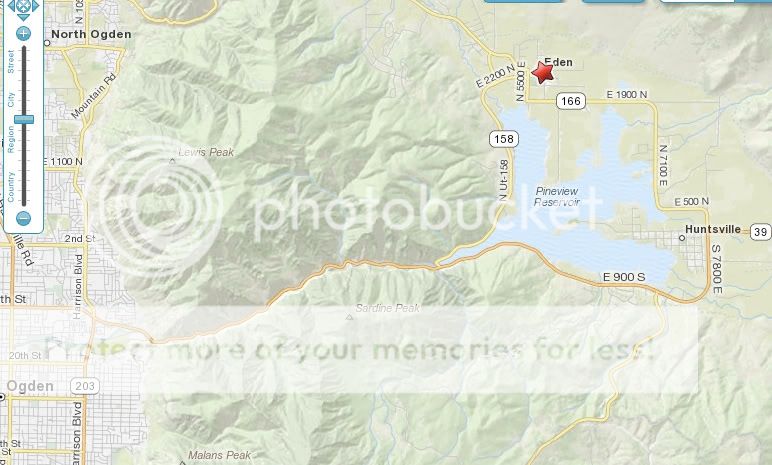
Born April 15, 1830, Wiflisburg, Switzer- land. Came to Utah Oct. 15, 1863, Samuel D. White Company. High Priest. Farm- er. Resided at Eden, Utah.Jacob Bachman died December 19, 1907 from pneumonia, 5 days, and organic heart disease, chronic nephritis, 2 years.What is Organic heart disease? OHD as it is referred as, Organic heart disease a condition wherein the heart doesn't function as it should because of any deformity or inflammation.This deformation can either be cardio or vascular in nature.Our heart consists of muscles, valves, arteries and veins which combine to pump in and out about 60-100 times per minute .The heart continues to be an efficient performer until lifestyles, habits, stress, compel it to behave abnormally. Organic heart disease is also mentioned in medical circles as cardiovascular heart disease.chronic nephritis - a form of kidney inflammation usually secondary to another disease, such as chronic pyelonephritis. In chronic interstitial nephritis the kidney becomes small and granular with thickening of arteries and arterioles and proliferation of interstitial tissue. There may be functional abnormalities, such as urea retention, hematuria, and casts.Though many different causes can be to blame for the onset of chronic nephritis, one of the most common causes is an allergic reaction to medicine. This type of allergic reaction can cause both treatable and irreversible damage. Common over the counter medications, such as pain relievers, can lead to this renal failure. Prescription medications, such as those designed to combat cancer and depression, can also cause the inflammation.Too much calcium in the blood can lead to chronic nephritis. The presence of other diseases in the body, such as chronic pyelonephritis, can also lead to the condition. As nephritis develops, it often spreads quickly, with several symptoms often displayed. Both laboratory and imaging tests may be conducted to properly identify the disease. Though early stages may be treated with lifestyle changes and medication, if this disease progresses without treatment it can lead to death. Kent
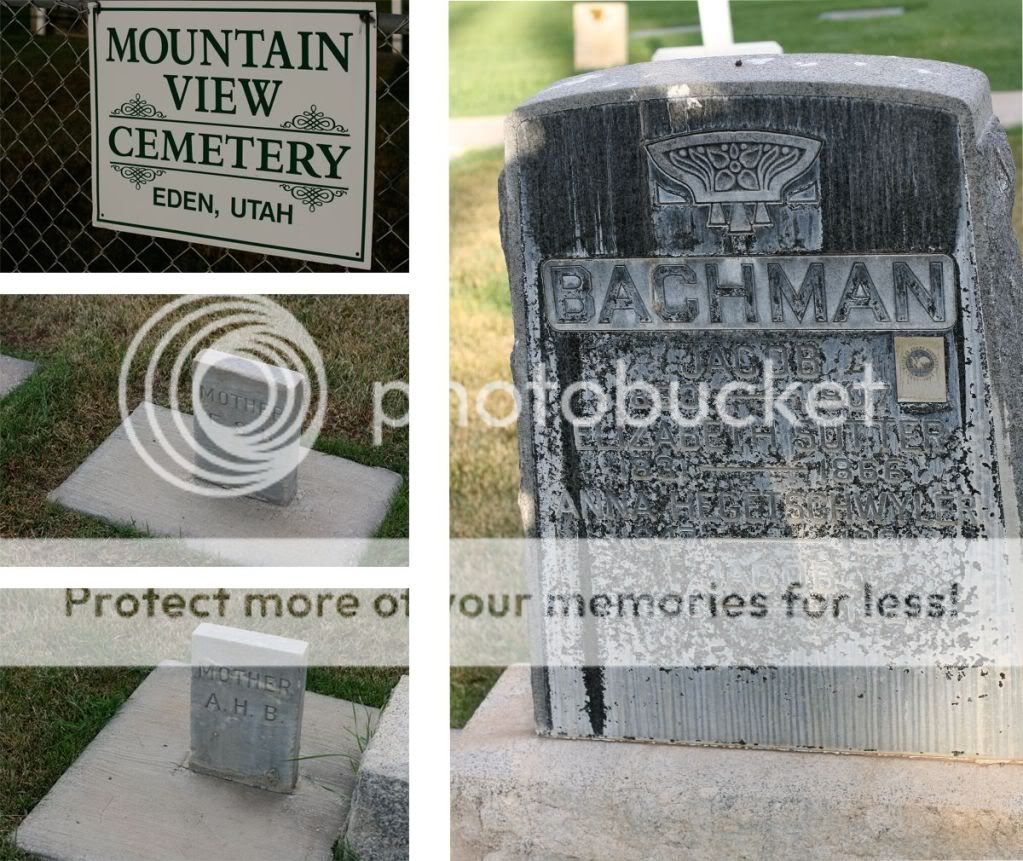
5001 AARAU, den 31. Mai 1972
Dear Mr. Bingham, your letter of May 13 can be answered as follows:
1. Switzerland is a confederation of 25 more or less sovereign states (= cantons). The cantons have the same status as your states in the USA (being just much smaller): own government, parliament, jurisdiction, police force, etc. One of these states in the canton of Aargau. These cantons consist of semi-autonomous communities, grouped in districts (= Bezirke).
2. In Switzerland we have the system of village-, town-, or city/community- citizenship. That means, that Swiss citizenship is bound to citizenship in a community, earned a) either by birth, or b) or by a decree + buying oneself in. The office of each Swiss community has a register of its citizens (living in the community or elsewhere). These registers were started some years after 1820; before this time the church-parishes had to keep registers of marriage, birth and death. The birthplace is in Switzerland of almost no legal consequence.
3. The citizens-registers (Bürgerregister) are kept in the archives of the communities. In the archives of communities being parish centers, one will also find the old church-registers.
See the enclosed genealogies. Your information about the dates seems to be rather correct.
These Bachmanns were citizens of Bottenwil, but lived in Wiliberg. Bottenwil belongs to the parish of Schöftland (Canton of Aargau, district of Kulm); Wiliberg belongs to the parish of Reitnau (Canton of Aargau, district of Zofingen). All the Bachmann children were born in Wiliberg-- with the exception of Samuel (?) (Emuel is no first name.) [Steve's note: I believe that Verena's brother was actually named Emuel, although in US censuses, his name has alternate spellings, one being Emil, a fairly common European first name. Perhaps his name, Emuel, was one-of-a-kind like my grandson, Draven, or maybe his name was the more popular Emil, creatively misspelled from the beginning.]
Samuel (?), according to your notes, born 1862 in Bern, Canton of Bern, Switzerland, cannot be found neither in the citizens-register of Bottenwil, nor in the church registers of reitnau. Therefore the family of Jakob Bachmann left the region of Bottenwil/Wiliberg forever between March 14, 1860, and August 17, 1862. In the citizens-register of Bottenwil we find on the page of the family of Jakob Bachmann-Suter the following note written by pencil: "Nach Amjerika in dass Mormonenland" (= to America into the land of the Mormons). [Steve's note: There is something so dramatic about this final entry, knowing what a sacrifice Jacob and Elizabeth made at this time, leaving the land forever that their ancestors had inhabited for centuries. They weren't forced to leave Switzerland by any homeland crisis or by poverty-- Their hearts had been touched by Mormon missionaries, and they were going to a "promised land".]
The following localities belonged before 1798 to the province of Lenzburg in the old state of Bern, since 1803 to the district of Zofingen in the canton of Aargau:
Bottenwil (first mentioned 1189 as Botanwile), belonging to the parish of Schöftland. There are quite many Bachmanns still residing in Bottenwil. Inhabitants 1960: 671 Persons.
Wiliberg, bore up to the 18th century another name: Bonhusen. It belongs to the parish of Reitnau. Nowadays there are no Bachmanns living in Wiliberg. Inhabitants 1960: 137 persons.
The following locality belonged before 1798 to the province of Schenkenberg in the old state of Bern, since 1803 to the district of Brugg in the canton of Aargau:
Bözberg (first mentioned 1189 as Bozeberch). This community was 1872 separated in Ober (Upper)- and Unter (Lower)- bözberg. The church stand in Unterbözberg. The family Suter comes from Unterbözberg, where there still exist some families of this name. Inhabitants 1960: 542 persons.
STAATSARCHIV DES KANTONS AARGAU
Der Adjunkt:
J.J. Siegrist
We climbed the hill again, and at the top we looked over into another valley at the church at Reitnau where the Bachmanns had attended and where the children were christened. I would estimate that the church is 2 miles from the home, but I could be off on this. Our historian friend said that there has been a church standing on this site since 1045 A.D. (I believe that was the date.) At any rate it was a very historical chapel.
We found Erich Bachmann, a great-grandson of Hans Rudolf, in Kölliken about 5 miles from Wiliberg.
Evidently Hans Rudolf's younger son (also named Jakob, the same name as his uncle, our ancestor, who had left for America) had moved to Kölliken to be closer to the railway as he had begun to branch out from forestry to transporting. At this time he was interested in importing McCormick farm implements.
Erich was this nephew Jakob's grandson. Erich was about 36-years old, and his wife, Suzy, about 27. They had been married about 4 years-- the Swiss not marrying as early as we Americans. Erich confirmed that his grandfather Jacob, had an older brother who had settled elsewhere in Switzerland, and that there had been a number of sisters, 4 of whom never married. Thus, this explains why Hans Rudolf had somewhat fewer descendants in Switzerland than our Jakob has in the USA-- that and with the older marrying age.
Erich's father, Jakob's son, had died 6 years ago of a heart attack and the transport business had grown considerably under Erich's leadership since then. Erich has a brother who is a driver for the company. Because of the exorbitant rent rates in Switzerland, Erich, his wife, his mother, his brother and brother's family all live in the same large home in Kölliken. Furthermore, the Bachmanns rent out an additional portion of the house. Also, come to think of it, the home housed the company's office and a workshop!
Erich was quite well off, having a number of trucks and sightseeing buses. He was glad to meet us and very hospitable. The next day after we had met him, he had an English-speaking friend (and employee) show us around and interpret for us. The friend drove us (very fast) to Lake Lucerne, Brünig Mountain, and Bözberg, where our great-great grandmother Elisabetha Suter was from. In Unterbözberg, we talked to the mayor who was just recovering from a "100 years' Bözberg celebration" and was at that moment in his cherry tree. He said that the Suter family that we were concerned about had left Bözberg many years ago and had settled in another Swiss town. He seemed to know just which Suter family was ours-- the family whose daughter had gone to America. I guess it was a rare thing in those early days for the comfortable Swiss to leave their country; so, again, I believe that shows the dedication and determination of those early Swiss Mormon immigrants.
The last evening we joined Erich, Suzy, and our interpreter for a fondue dinner in a spectacular mountaintop restaurant. Our conversation was interesting-- my wife, Linda, a French teacher, conversed with Suzy in French. Erich and I used the translation skills of the interpreter, Linda, and Suzy to communicate in English and Swiss-German. I had a feeling that Erich understood a lot more French and English than he let on.
Erich was very interested in the story of Jakob and Elisabetha's trials in America, and he was very interested in getting a copy of any genealogy that we might have. He and his English-speaking friend were interested in the Church and I believe that we changed a few opinions in this respect. Erich asked why Hans Rudolf had not remained a Mormon, and we could only give him our supposition that times were tough for Mormons in those days, and there were many temptations to try one's faith.
I hope to correspond with Erich and his wife and eventually see him again.
One more thing-- Erich mentioned that they had Hans Rudolf's tombstone in their house. I didn't understand why.
Steven R. B
BACHMAN, JACOB (son of Hans R. Bachman, born April
3, 1791, and Elizabeth Aerna, born April 10, 1791, both of
Switzerland: married Sept. 26, 1824). He was born April
15, 1830, Wiflisburg, Switzerland. Came to Utah Oct. 15,
1863, Samuel D. White company.
Married Elizabeth Sutter of Bozberg, Switzerland. Their
children: Mary b. Feb. 21, 1854, died; Frana b. Feb. 23,
1857, m. Henry A. Hill; Jacob b. Oct. 27, 1858; Elizabeth b.
Research:
Jacob's home in Wiliberg
Hello Patrick, I find you and your colleagues' favorable reaction to our
visit very touching. There are apt to be 3 of us visiting Wiliberg the
afternoon of May 23 (Saturday) or anytime May 24 (Sunday), whichever would
be more convenient for you.
Ours is quite a dramatic story of the two Williberg brothers, Jakob and Hans
Rudolf Bachmann, who were very close at one time, I think they even lived
together in the big Wiliberg house. In the beginning, they both wanted to
immigrate to Utah, USA, but because of unfortunate circumstances (the loss
of traveling money), only Jakob and his family made the journey. As the
years went by the 2 families grew apart and even forgot one another.
The Swiss remnants of Hans Rudolf's family are represented by Erich and Suzy
Bachmann of Kolliken (Bachmann AG Transporte Schweiz.) I met Erich and Suzy
in 1972, became friends, wrote for many years, but now have lost touch. It
would be great to see them again. I'm not sure, however, whether Erich
would want to be a "family representative." Erich was a little shy, as I
recall, but Suzy was outgoing. I have a feeling that maybe after our 1972
visit, the Kolliken relatives may have been inundated by their Western USA
tourist relatives. There are many more of us than of them. It would be
wonderful if the Kolliken Bachmanns were invited to join us, but I'm not
getting my hopes up :)
If you're interested, I could round up some short histories and diaries
pertaining to the Bachmanns of Wiliberg, and I could email that information
to you.. I will be traveling throughout Europe beginning Wednesday, May 6.
Best wishes to our Swiss friends,
Steve Bingham
2015 Where was Jacob born and raised?
Kent--
My problem is the claim that the Bachmann house was the only one on the hill. The date you have on Emma's complete history is 1958? While the historian said that the Bachman house dates back to 1776, the house next door, belonging to the Suters has "1930 J.S." in large letters on the outside. (This is the house that 43 years ago I thought was the Bachmann house.) So the Suter house also would have been right next door there in 1958.
I believe that Suter is a common name in Switzerland (as is Bachmann apparently). The historian said that this Suter family wasn't related to our Suter family (but Jakob's first wife Elizabetha was a Suter). A coincidence? Off the subject-- The Sutter of Sutter's Mill in CA where gold was first discovered was from Switzerland.
The historian pointed to a small building on the Suter property and said that that building was the oldest one in the valley.
The present owner of the Bachman house, Mr. Stettler, produced a deed of sale from Jakob Bachman-- the date on the deed indicates that this Jakob was our Jakob's nephew, who is pictured as a boy in the Hans Rudolf photo. Mr. Stettler said that he has lived in the home for 80 years.
Thinking about this, one has to wonder who the most credible authority is-- Emma's researcher, the historian I met, or neither.
So if the Bachman house dates way back to 1776, maybe the oldest little house next door was one that the Bachmanns first inhabited. Then they built a bigger house. If the "1930" is the date the Suter house was built, that was about the time that the Stettler's obtained the Bachmann house, so maybe there really isn't any relationship between the Bachmanns and this Suter family. But why are the two big houses so close to one another?
Interestingly, Mr. Stettler remembers when he was young, that there was the name Baumann over the front door. Which makes me think that maybe it was the Baumanns who first built the house in 1776, Then the Bachmanns came from Bottenwil (a nearby village of which the Bachmanns remained citizens in 1972) and bought the house and land from the Baumanns.
I'll send this to Wiliberg and see what the historian has to say about it.
Am I correct that Emma wrote her history in 1958? I wonder if her historian did his research around 1958. Would you see what you have on that date? That would help me when I communicate with the historian who I met.
S
Hello Steven
It will be a pleasure helping you to find the house. We even forwarded your
picture and the excerpt to our village historian. Besides helping us to
locate the house, he may even provide you with information about the house
and it’s residents in the past.
We already have an assumption, but we like to investigate a little more.
If the date of your visit fits into our schedule, a delegation would like to
meet you and hopefully show you the house.
Can we still reach you by mail, once you are on route? If not, how should we
communicate?
Regards
Patric Jakob
-----
No virus found in this message.
Checked by AVG - www.avg.com
Version: 2015.0.5863 / Virus Database: 4339/9681 - Release Date: 05/02/15
Bachman, Jacob
High priest. Farmer.
Married: Elizabeth Sutter of Bozberg, Switzerland. Family resided at Lynn and Eden, Weber county, Utah.
- Their children:
- Mary, born February 21, 1854, died;
- Frana, born February 23, 1857, married Henry A. Hill;
- Jacob born October 27, 1858;
- Elizabeth, born March 14, 1860, married W. H. Reeder;
- Emuel born August 17, 1862, married Mary Jane Heninger;
- Rosilla, born February 26, 1864, married Moroni D. Ferrin March 6, 1889;
- Bertha born April 19, 1865, married A. J. Stallings July 3, 1885;
- Alma born November, 1866, died December 25, 1890.
Married: Anna Hazel Sweiler April, 1867, at Salt Lake City (daughter of Anna Sweiler), who was born September 29, 1847, Ottenbach, Switzerland. Family home Eden, Utah.
- Their children:
- Joseph born February 8, 1868, married Maggie McBride December 8, 1890;
- Annie born August 9, 1870, married William Ingles March 10, 1901;
- John R. born October 19, 1875, married Nellie Fordham August 19, 1900;
- Emma Josephine born December 8, 1887.
| Sources: |
|---|
1. Political/Religious and Community relationships: What are the titles of the 3 officials I met, and what areas are they over? Can you tell me about the relationship between Wilberg and Bottenwil. Is the parish for Wilberg named Bottenurl? Is there a parish church?
2. Wilberg: Where are the rest of the Wiliberg houses? There were the 2 business-- restaurant and building materials. Is that all? How many homes are in Williberg? Is Emma accurate when she days the Bachman’s were in the logging business? Where are the records kept for Wiliberg residence in the 1800s.
3. Community? Patrik, why did you choose to live in Wiliberg, and the others? Good place to raise kids?
4. Restaurant: The restaurant was named Mooseräge. I noticed Mooseräge on a signpost as if it was the name of an area or village? What does that word mean?
5. Historical accuracy? What do you think of Emma's first paragraph about the Bachmann house? Is Emma accurate?
6. Adjacent home: The neighbors had 1930, JS on their house. Is that when the home was built? Just before Mr. Stettler was born. Why is the "oldest Wiliberg house" on their property. Why is the house so close to the Bachmann house? Where are the property lines for these two homes? How much acreage does each house own? Can we get a platt map?
7. Jacob Bachmann home. There was a house built there in 1776, Jakob Bachmann was born there 1830. The first owners appeared to be a Baumann family. Stettler has the deed where his father (?) purchased the house from Jakob's nephew Jakob. How can we get a copy of the deed?
8. Cutting grass: What about the 2 Bachmann's in the picture cutting grass? Who are they? Are they cutting grass for cows? What is known about the photograph? Where was it found?
9. Family photograph: What does the name of Sacherruedi mean? , and why Has Rudolf has "Müller" in his name? How can we trace what happened to each member of the family in the photograph? Where are the records found? church? canton?
10. The church and cemeteries. Serves the entire valley? Denomination? Church attendance? Are headstones valued in Switzerland? How do Swiss residence view cemeteries? where is the local cemetery? Is it true that 80 percent of the Swiss residence get cremated? What do most do with their ashes?
Thanks,
Steve
Future questions regarding Wiliberg:
1) Visit Bottenwil, take photos
2) Visit Aarau and Wiliberg historian and find what kind of records exist
3) You might have an “in” with the Kolliken Bachmans when they know the info you’ve collected on Bachmann Transporte, especially if your info come up in a google. Remember that we know more about their history than they do, but there are some questions that we can ask them, like “What connections do you still have in the Willibert/Bottenwil area?”




























